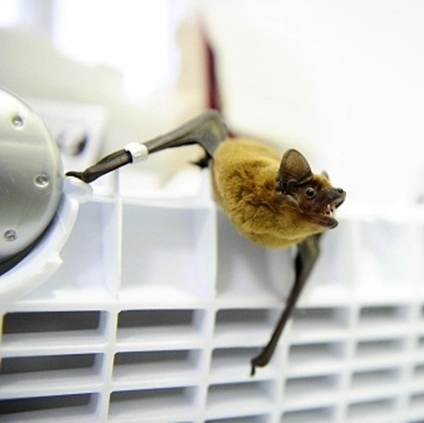

The closest known relatives of SARS-CoV-2 have been found in Rhinolophus affinis bats in Yunnan province, in southwestern China, and in three species of horseshoe bats in Laos
<p>
<strong>There are nearly 40 per cent unknown species of horseshoe bats in southeast Asia and China, according to a study.</strong></p>
<p>
The study, led by researchers at Chinese Academy of Sciences and University of Hong Kong, identified 44 potential cryptic Horseshoe bats (Rhinolophidae) species within 11 species of Rhinolophus sensu lato in Southeast Asia and south China.<br />
<br />
In the paper published in Frontiers in Ecology and Evolution, the team highlighted the need for further work to describe species across the region and better understand their cryptic diversity, and underscoring the unappreciated cryptic diversity in the group.<br />
<br />
Horseshoe bats (Rhinolophidae) are considered the reservoir of many zoonotic viruses – which jump from animals to people – including the close relatives of the viruses that caused severe acute respiratory syndrome and Covid-19.<br />
<br />
Identifying bat species correctly might help pinpoint geographical hotspots with a high risk of zoonotic disease, Shi Zhengli, a virologist at the Wuhan Institute of Virology in China, was quoted as saying to Nature.<br />
<br />
Better identification of unknown bat species could also support the search for the origins of SARS-CoV-2 by narrowing down where to look for bats that may harbour close relatives of the virus, added study co-author Alice Hughes, a conservation biologist at the University of Hong Kong.<br />
<br />
The closest known relatives of SARS-CoV-2 have been found in Rhinolophus affinis bats in Yunnan province, in southwestern China, and in three species of horseshoe bats in Laos, the report said.<br />
<br />
To better understand the diversity of bats in southeast Asia and find standardised ways of identifying them, Hughes and her team captured bats in southern China and southeast Asia between 2015 and 2020.<br />
<br />
They took measurements and photographs of the bats&#39; wings and noseleaf – &quot;the funky set of tissue around their nose&quot;, as Hughes describes it – and recorded their echolocation calls. They also collected a tiny bit of tissue from the bats&#39; wings to extract genetic data.<br />
<br />
To map the bats&#39; genetic diversity, the team used mitochondrial DNA sequences from 205 of their captured animals, and another 655 sequences from online databases – representing a total of 11 species of Rhinolophidae.<br />
<br />
The researchers found that each of the 11 species were probably actually multiple species, possibly including dozens of hidden species across the whole sample.<br />
<br />
Hidden, or &quot;cryptic&quot;, species are animals that seem to belong to the same species but are actually genetically distinct. For example, the genetic diversity of Rhinolophus sinicus suggests that the group could be six separate species, the report said.<br />
<br />
The findings corroborate other genetic research suggesting that there are many cryptic species in southeast Asia, the report said.</p>
<p>
<strong>Also Read: <a href="https://www.indianarrative.com/world-news/russian-foreign-minister-in-china-ahead-of-india-visit-meets-chinese-counterpart-just-back-from-delhi-160847.html">Russian Foreign Minister in China ahead of India visit, meets Chinese counterpart just back from Delhi&nbsp;</a></strong></p>
Prominent human rights activist Manzill Murshid anticipated that the upcoming election in Bangladesh will bring…
Iranian Foreign Minister, Seyed Abbas Araghchi, said on Saturday that President Donald Trump should put…
The national capital is hosting ten representatives from the American state of Montana, who are…
An earthquake of magnitude 6.0 struck the Philippines in the early hours of Saturday, as…
NATO's recent decision to ramp up military spending will not significantly impact Russia's security, Foreign…
India has imposed anti-dumping duties on imports of Plastic Processing Machines from China and Taiwan,…